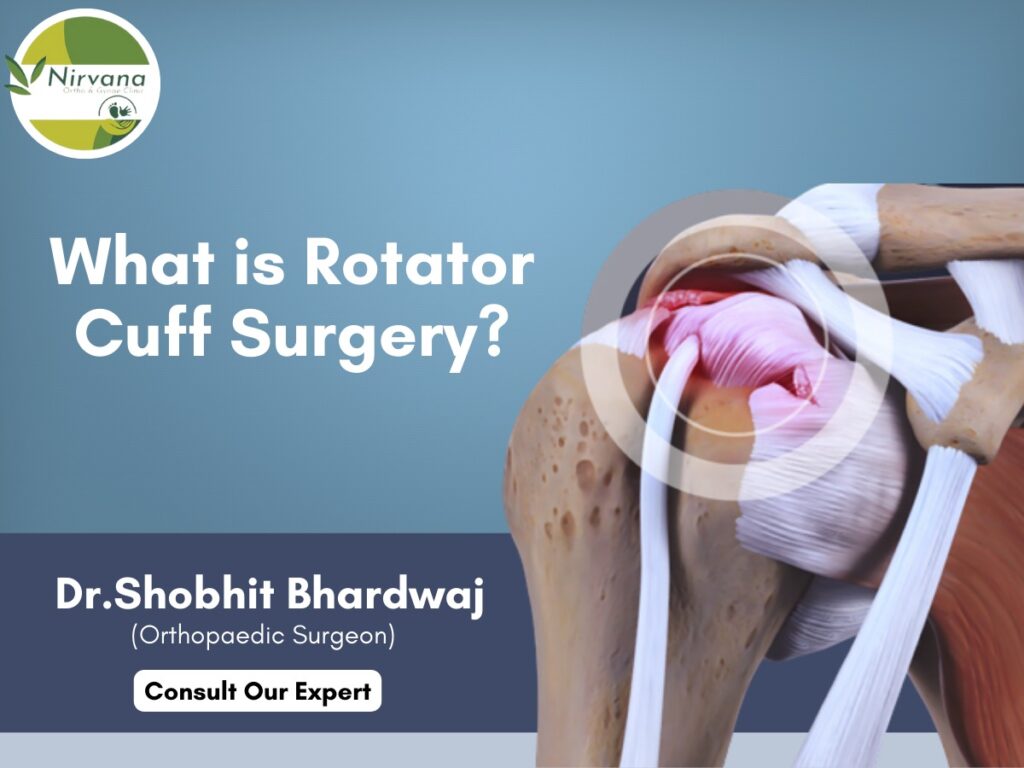Surgery to repair a torn rotator cuff is known as Rotator Cuff Surgery. It most often involves re-attaching the tendon to the head of the humerus known as the Upper arm bone. The tendon is stitched back to its original location to heal a full tear. The four little muscles that make up the rotator cuff in the shoulder allow the upper arm to spin. The tendon portion of the rotator cuff muscle separates from the upper arm’s bone when it is ripped. A rotator cuff tear can be caused by an accident, such as a fall or heavy lifting, or by repeated motions over a long time.
According to the Best orthopaedic doctor in Noida, Surgery might not be necessary to cure certain small tears. However, for many to recuperate correctly, surgery is necessary.
What procedure is used to treat a torn rotator cuff? An orthopedic surgeon uses an absorbable suture anchor to reconnect the torn rotator cuff tendon to the humerus (upper arm bone). The outcome of the procedure depends on how effectively the tendon-bone junction recovers.
How is a rotator cuff operation carried out? Arthroscopy is used to conduct rotator cuff surgery. Small incisions are made during a shoulder arthroscopy to guide an arthroscope—a short tube attached with a camera—to the area of the tear. Then, with the use of specially created tools, we may restore the rotator cuff while causing the least amount of damage possible to the nearby muscles and tissues. Instead of using a general anesthetic, patients at Hospital for Special Surgery have this surgery done while under a nerve block (regional anesthetic) and partial sedation. This reduces the quantity of anesthetic and pain medication used, which in turn lessens nausea and vomiting. The majority of our patients may now return home within a few hours following their operation thanks to advancements in anesthetic and less invasive procedures.
To diagnose and treat any related issues, such as a biceps tendon injury, loose bodies, or a torn labrum, an arthroscopy of the glenohumeral joint (the ball-and-socket component of the shoulder joint) is first done. The glenoid, the cup-shaped part of the shoulder joint, is surrounded by the shoulder labrum, which is a rim of cartilage. At this stage, a shaver can be used to trim a partial rotator cuff tear (a tear through less than 50% of the thickness of the rotator cuff tendon). The subacromial space, under which the rotator cuff tendon runs on the upper surface of the scapula or shoulder blade, is the next location for the arthroscope. The subacromial space is then made accessible by doing a subacromial decompression. A bone spur and abnormalities on the bottom of the acromion, which can lead to rotator cuff discomfort and tears, are removed during this treatment, known as an acromioplasty. Suture anchors and sutures are then used to restore the damaged tendon to the bone.
When should you get rotator cuff surgery? For individuals with a full thickness tear or those whose partial thickness tear has not responded to conservative treatment, surgery is advised (two months of physical therapy). After trying conservative therapy for two or three months and still experiencing discomfort and difficulties with activities, a patient may think about having surgery to repair the tear.
Exists a rotator cuff surgery substitute? Two months of physical therapy may be used to address minor or partial rotator cuff injuries.
Do partial rotator cuff injuries require surgery? Surgery is the sole choice if physical therapy has not successfully improved strength and function. Before initiating physical therapy, a patient must feel that more than 70% of their shoulder strength and function have been recovered by nonsurgical means.
What percentage of rotator cuff surgeries succeed?
For minor injuries, rotator cuff surgery has a success rate of greater than 95%. The success rate is still more than 70% for two tendon rips. It is recommended to fix tears when they are little since untreated tears tend to enlarge. Surgery, however, may still be beneficial for individuals with very significant tendon rips. We occasionally have the option to employ a method known as margin conversions. To keep the tendon in the joint, grafted tissue is used to cover the humeral head. A patch of donor tissue is applied when the tendon tissue is inadequate for immediate healing.
If you have any questions and are seeking orthopaedic doctor in Noida, Contact Us Now.

